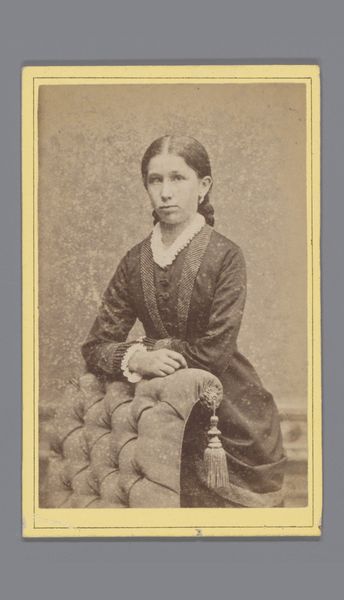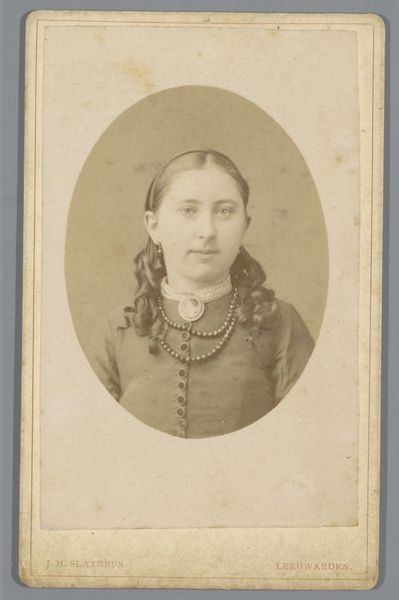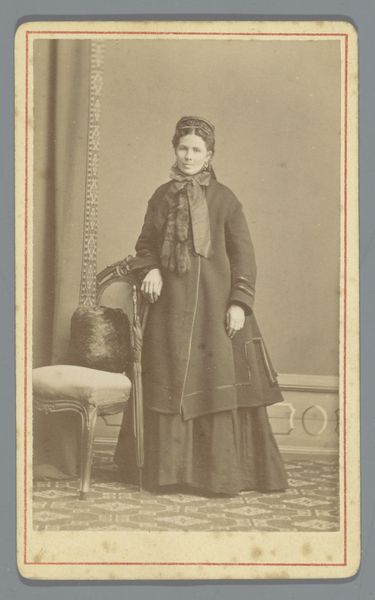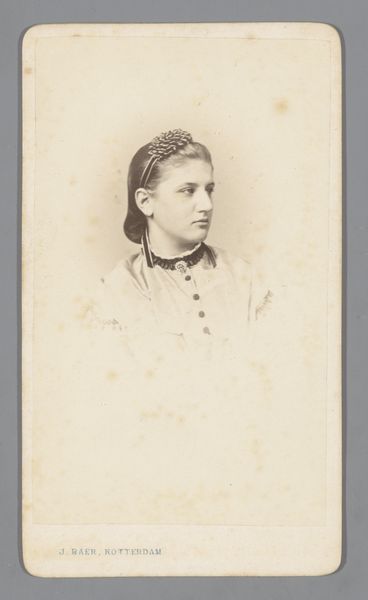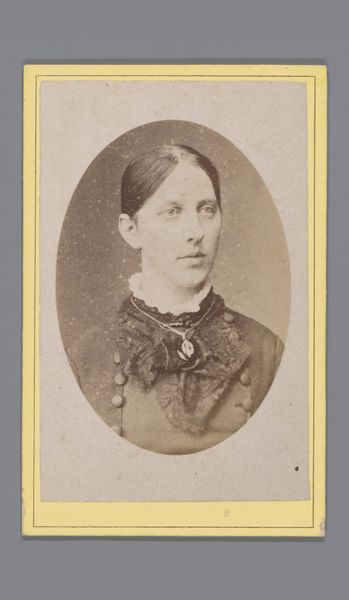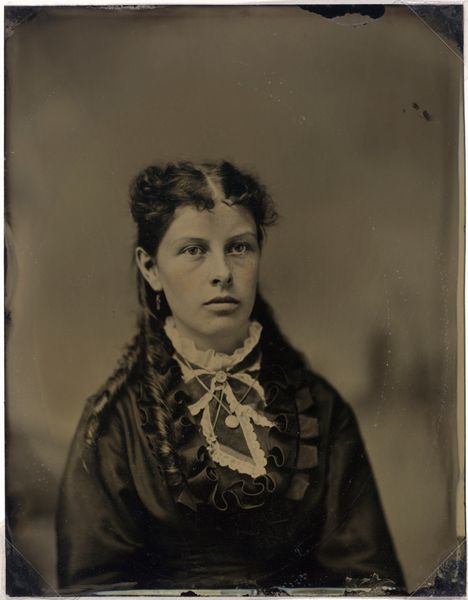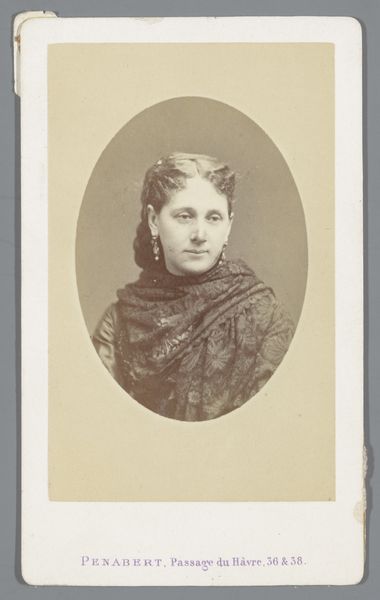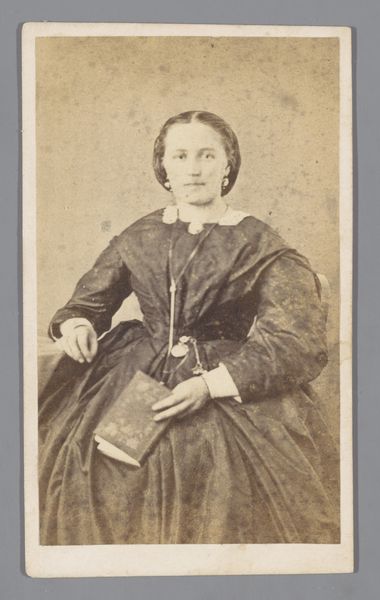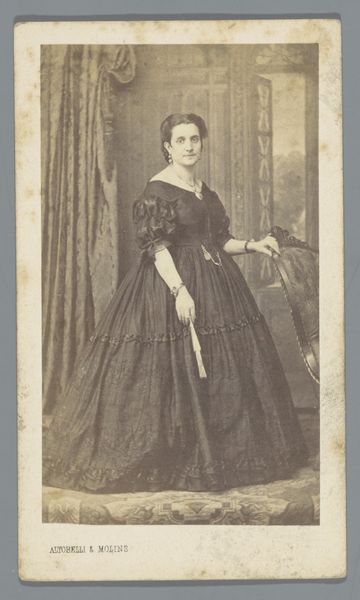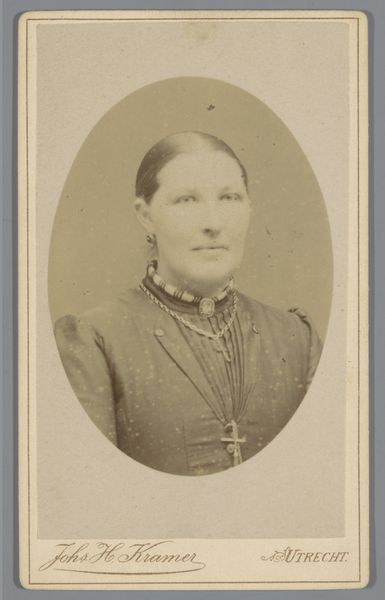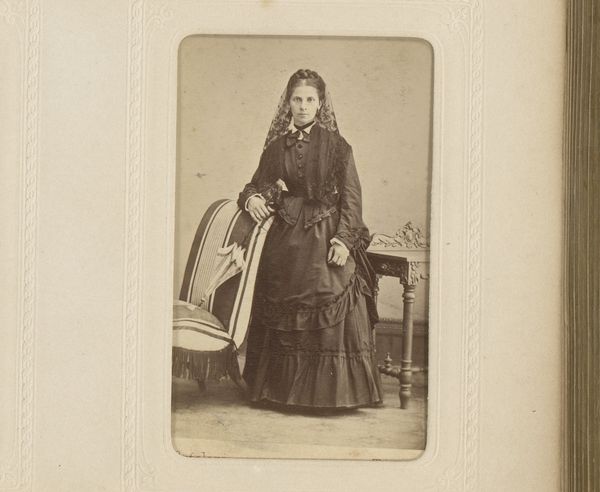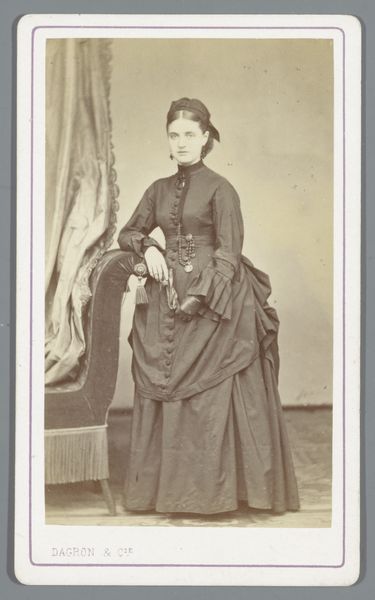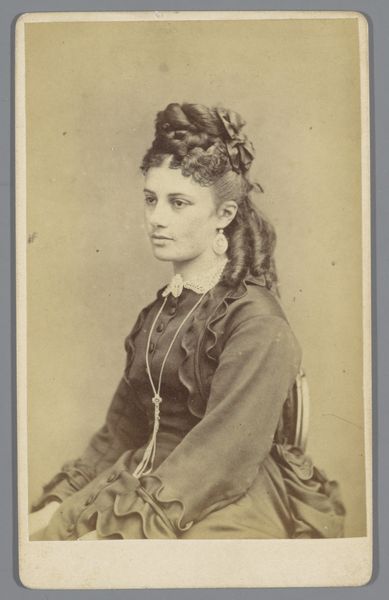
#
pencil drawn
#
toned paper
#
light pencil work
#
pencil sketch
#
charcoal drawing
#
portrait reference
#
pencil drawing
#
portrait drawing
#
watercolour illustration
#
watercolor
Dimensions: height 155 mm, width 99 mm, height 168 mm, width 112 mm
Copyright: Rijks Museum: Open Domain
Curator: This portrait, dating from 1890, presents Amalia Deschler in her role as Mary Magdalene. What are your initial impressions? Editor: She looks utterly composed, even restrained, yet her eyes suggest a wellspring of something untold. The monochromatic tones amplify this sense of interiority, don't you think? Curator: I agree. It’s intriguing to consider how the photographer, perhaps striving for a sense of historical gravity, would've positioned Amalia, especially given the charged image of Mary Magdalene throughout history. Consider also the materials; it appears to be a photograph meticulously captured on, likely, albumen paper. Editor: The choice of albumen paper gives it a tangible weight. Think about the layers involved – the delicate coating, the precision of the negative. It connects the sitter to a very specific era of image production. It also draws out these wonderful brown sepia tones. And her hair—it's beautifully tactile, I feel I could run my fingers through it. Curator: There’s an inherent tension in staging this very earthly figure as Mary Magdalene, a woman whose story oscillates between sin and sainthood. It suggests, perhaps, a more human and less sanctified interpretation. A modern re-imaging of an iconic biblical character. Editor: Absolutely! And it makes you wonder about the context of its creation, what discussions surrounded the making of the portrait. Was it personal or for something like publicity, tied to a play or pageant? The materiality and her expression blend into a document that offers tantalising hints without revealing enough. Curator: Indeed. This image becomes more captivating with each viewing, drawing us into an era where theatricality met technological advancements. We start thinking how the very substances that made this image visible contributes to its emotional resonance. Editor: I like that—it transforms our perspective of the work as we notice not only the emotional weight of the photograph but also its materiality and tangible cultural moment in time.
Comments
No comments
Be the first to comment and join the conversation on the ultimate creative platform.
